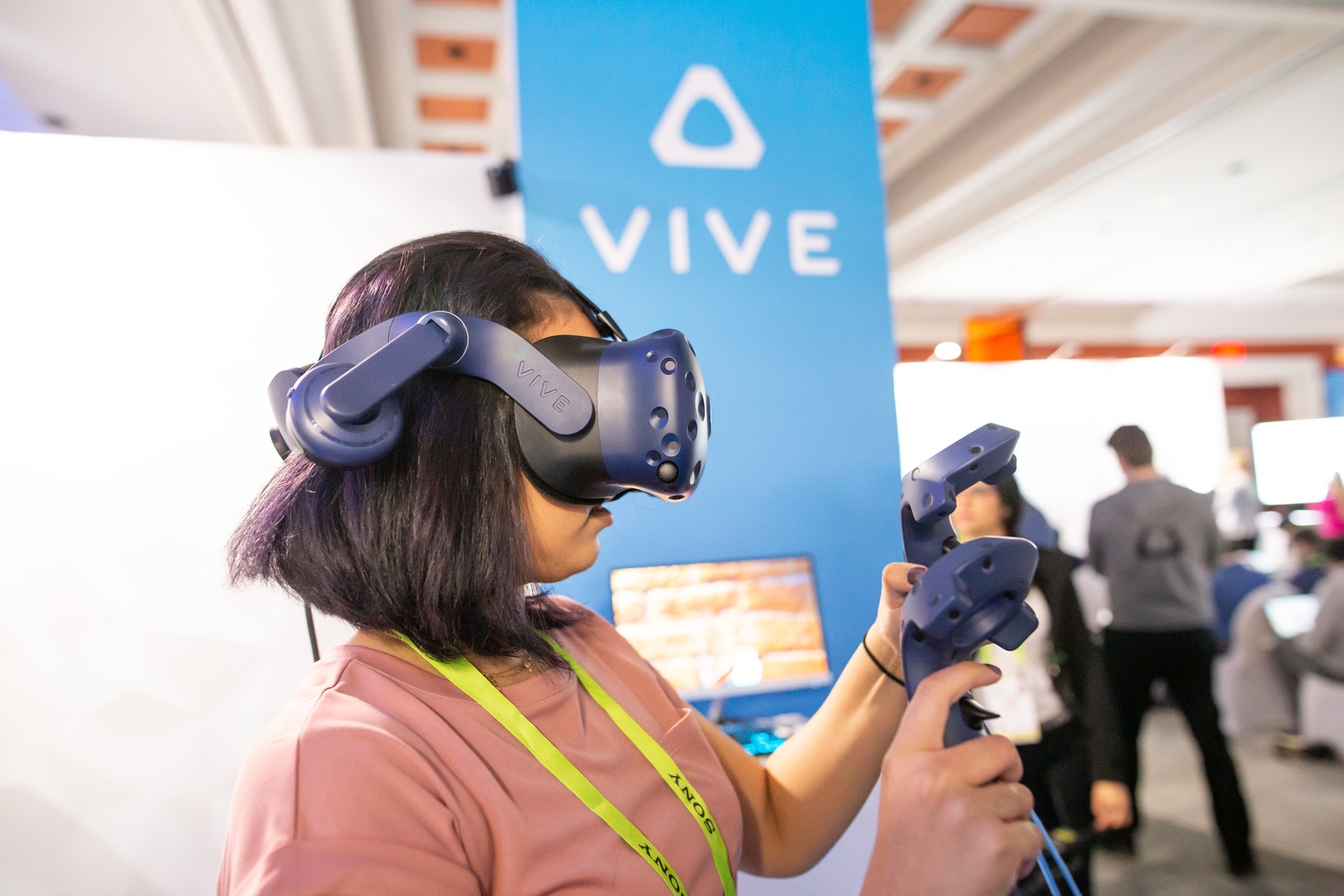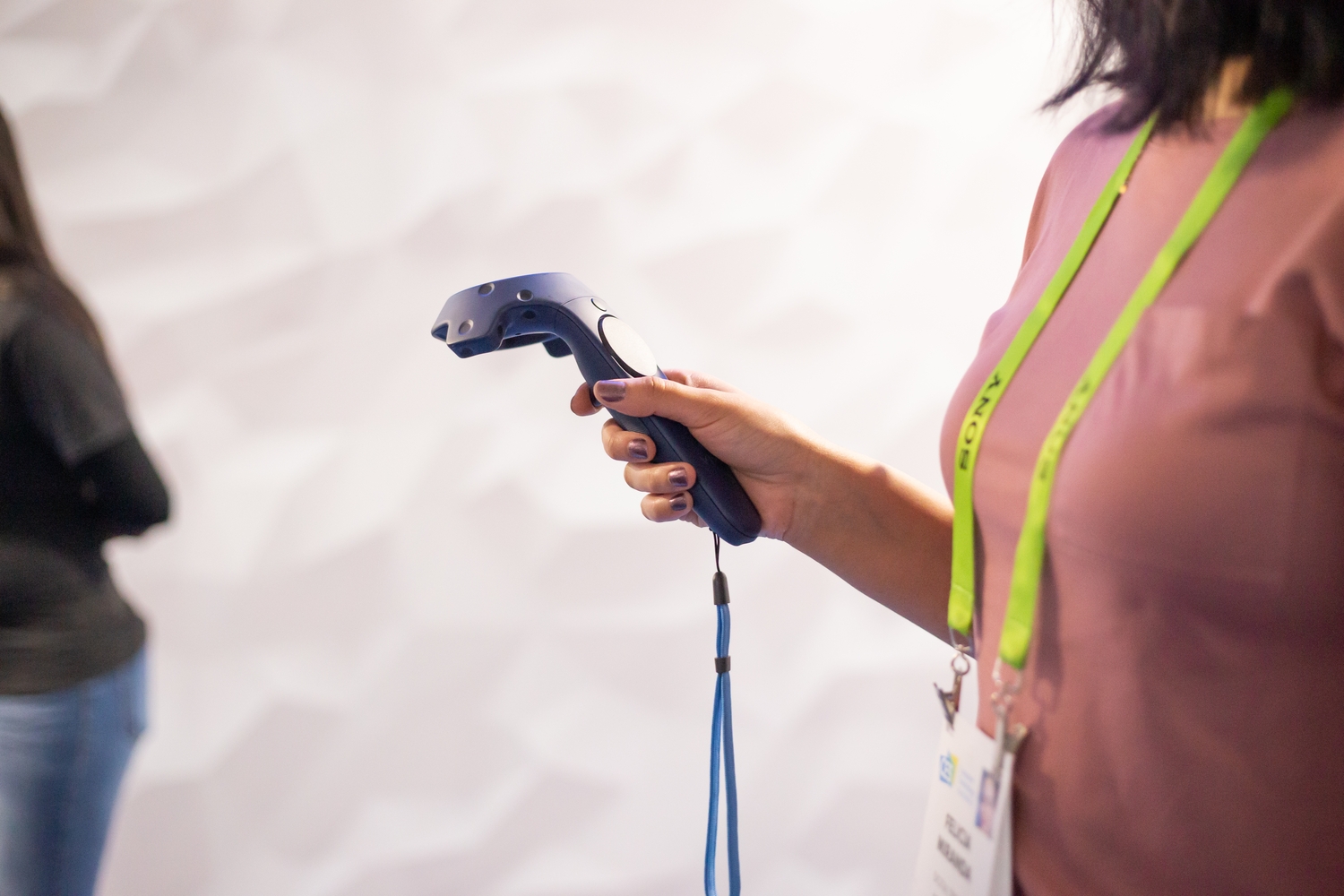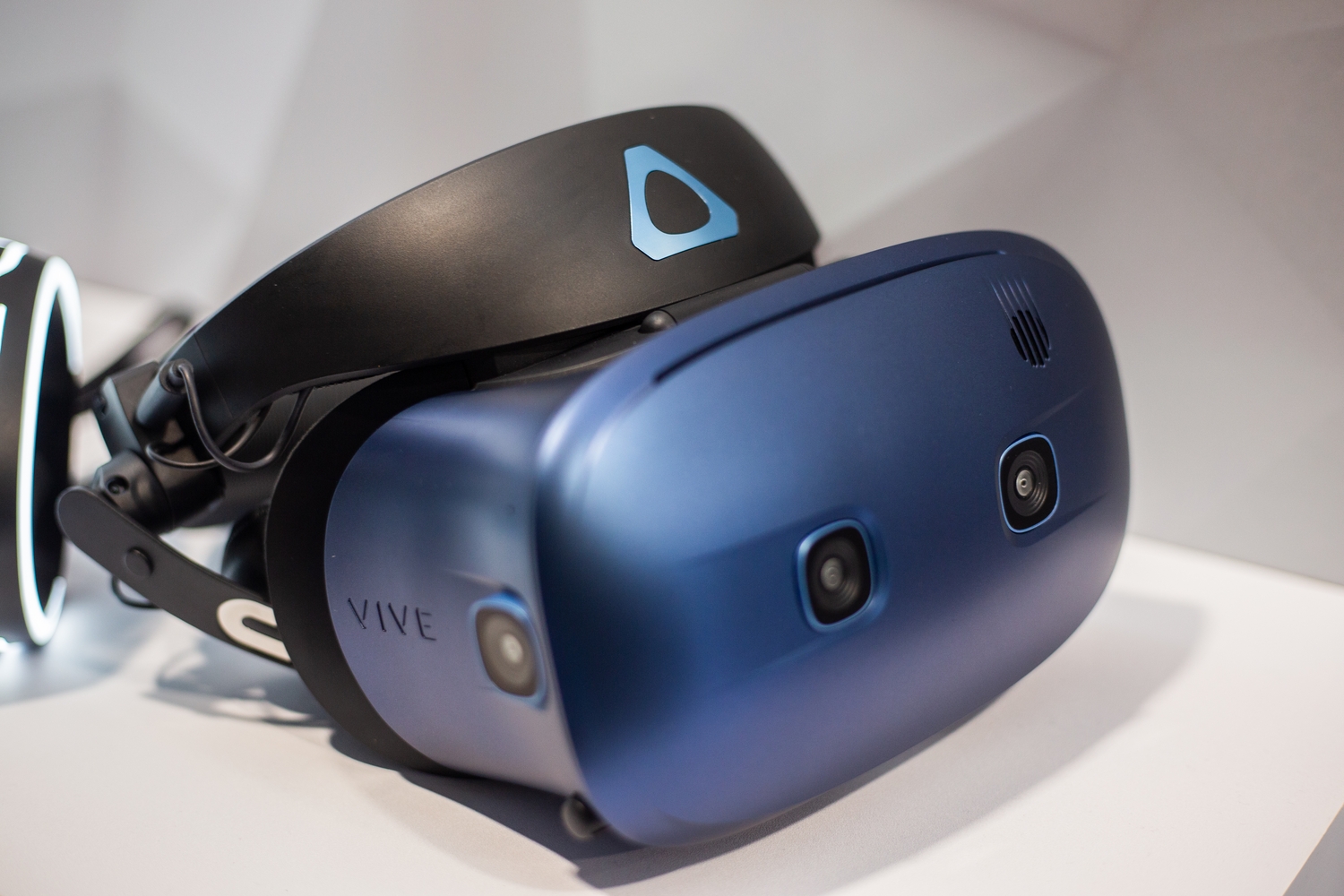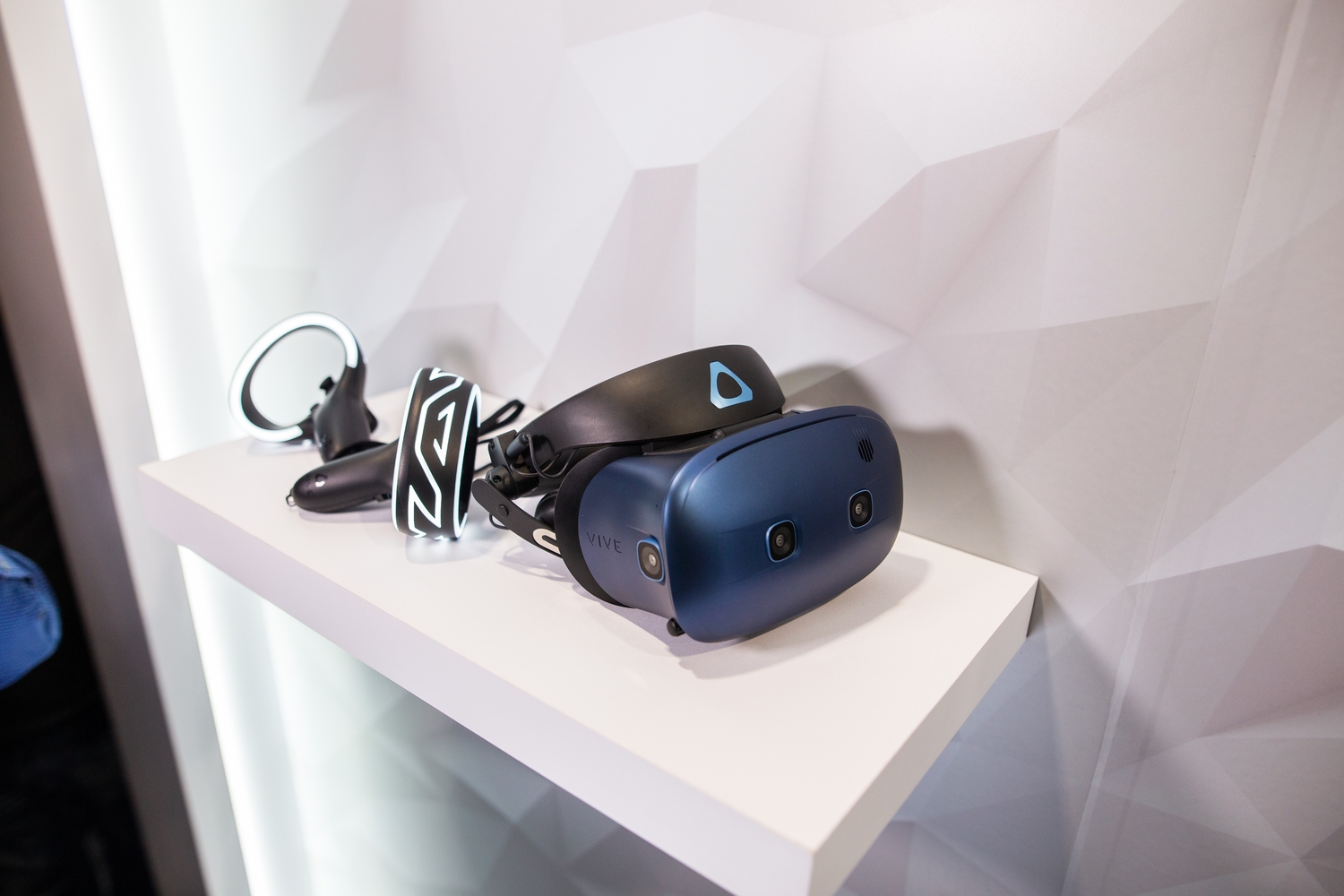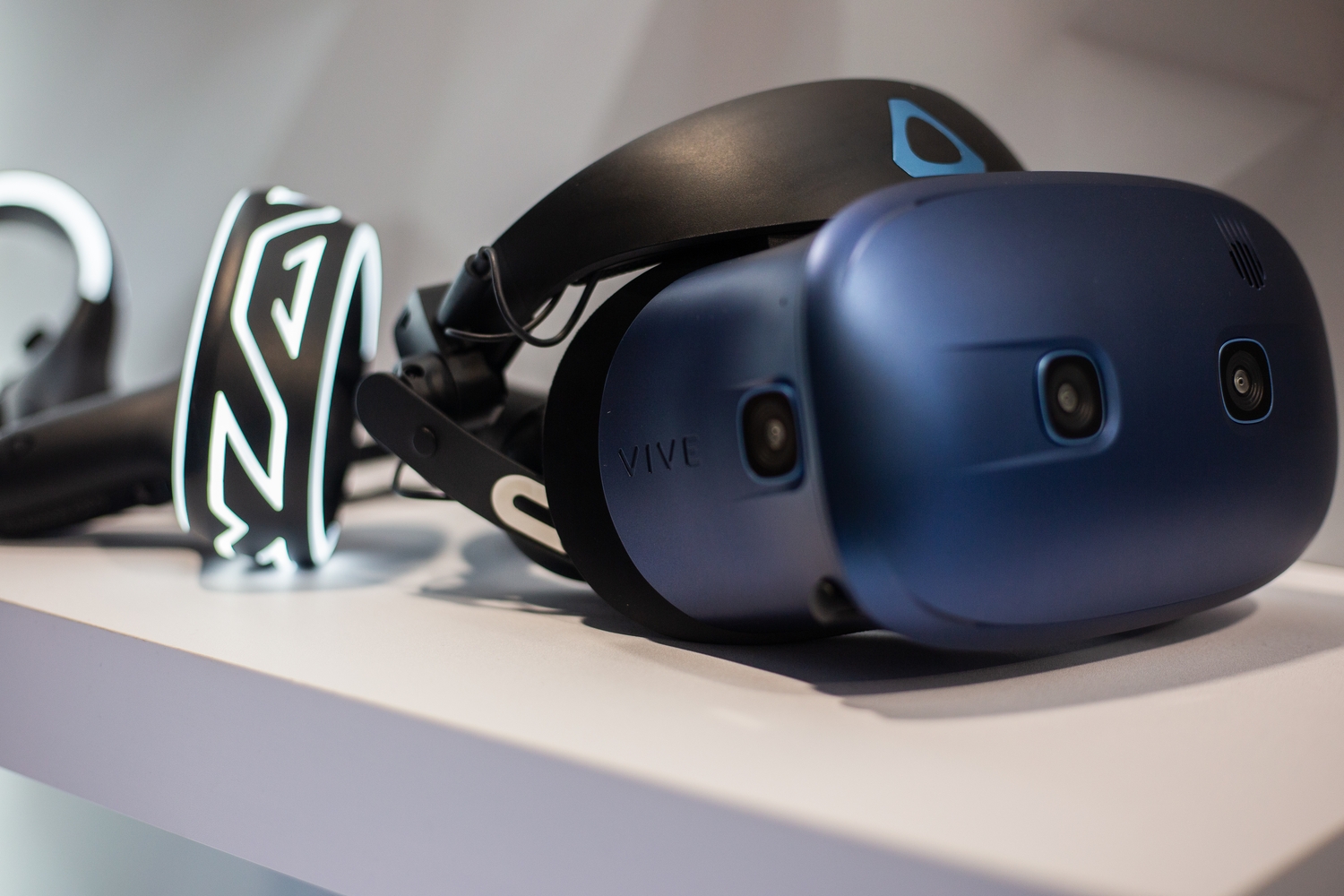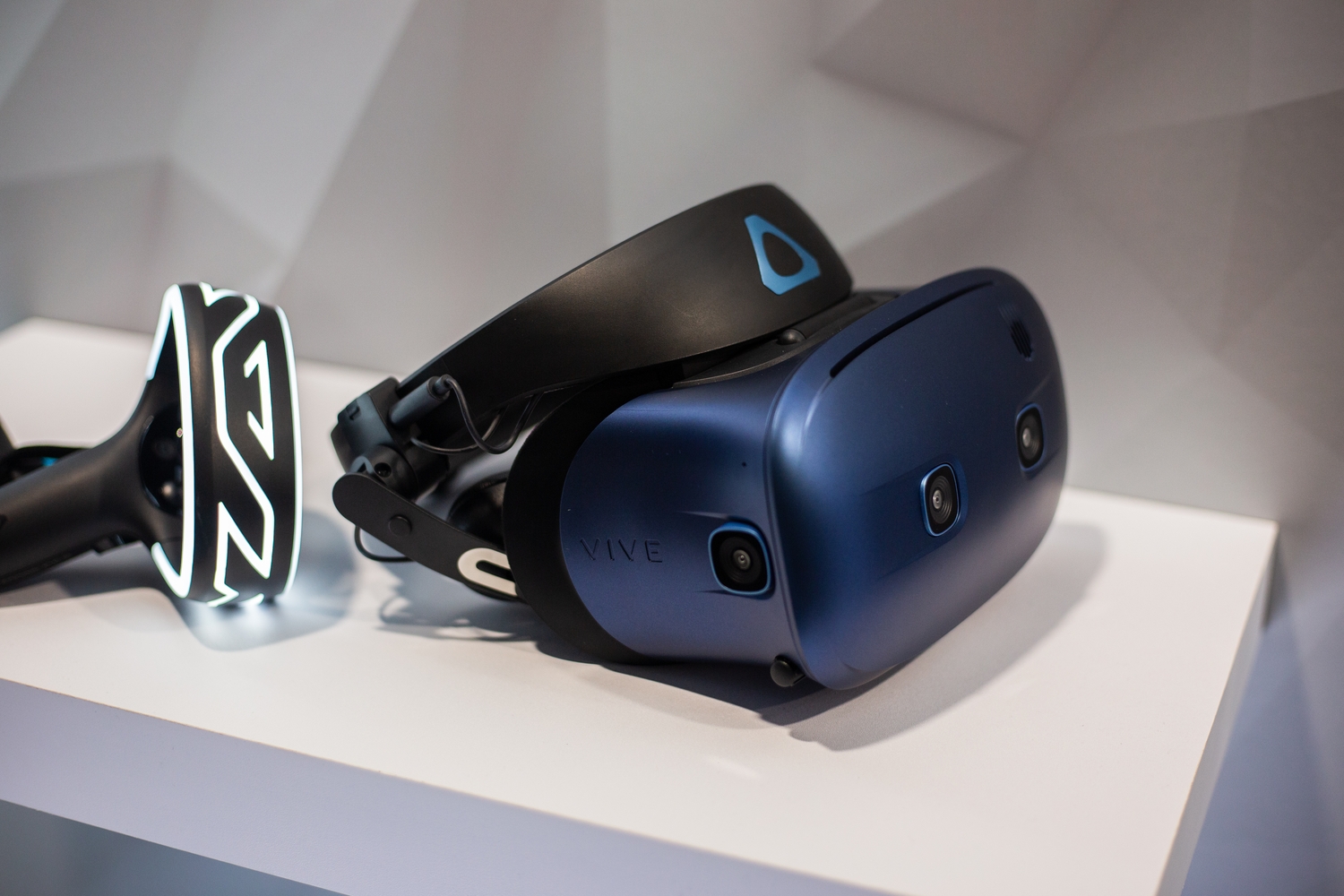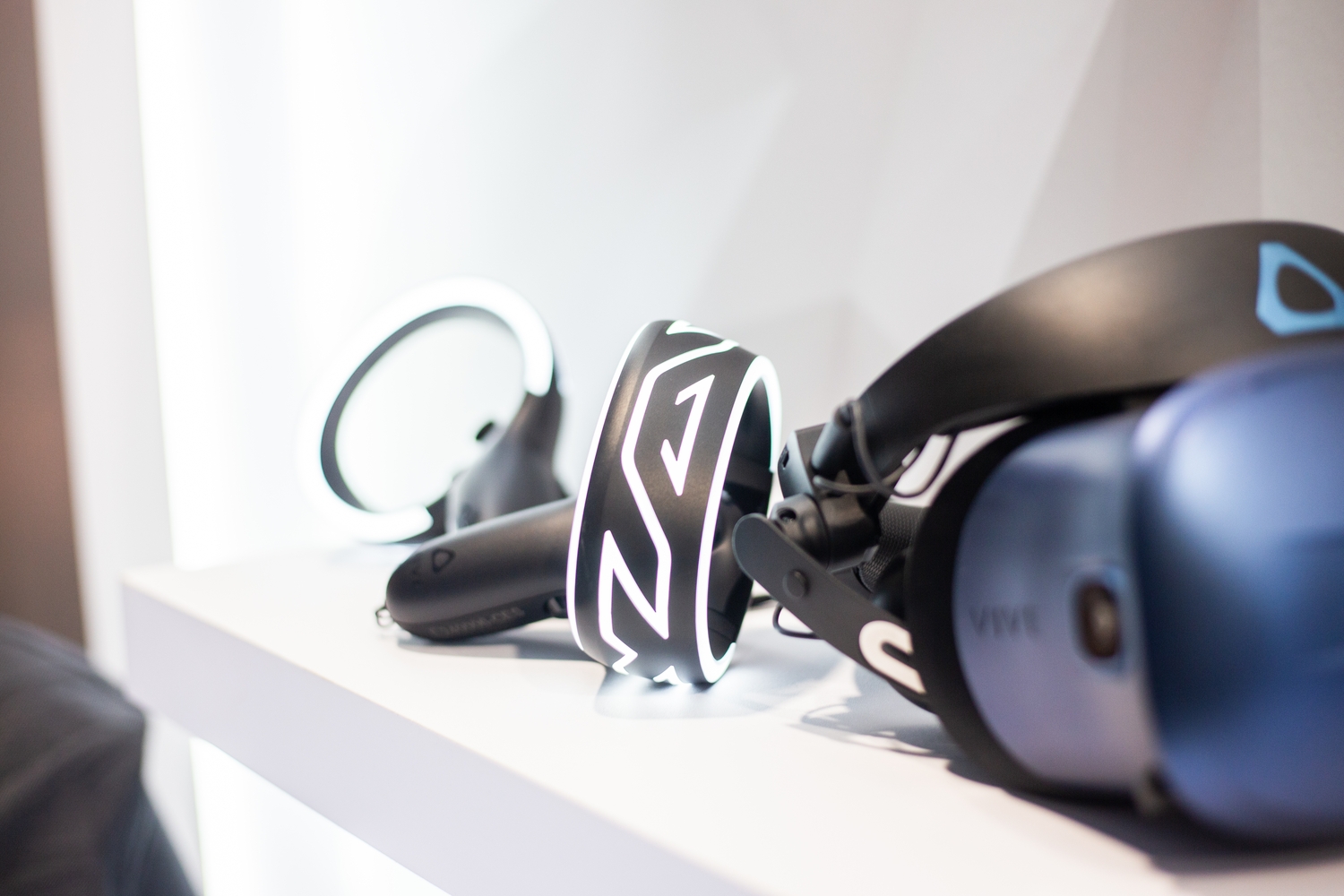HTC Vive’s apperance at CES wasn’t just to offer small updates or incremental changes. On the contrary, the HTC Vive press conference offered information on two different headsets, a new subscription service, and a new interface that will be used to power virtual worlds. Here’s everything announced.
Vive Pro Eye Brings Integrated Eye Tracking to VR
The Vive Pro headset has been upgraded with integrated eye-tracking support to become the Vive Pro Eye, scheduled to launch in Q2 2019.
With the technology built into every Vive Pro Eye headset, menu navigation and other gaze-oriented tasks can be done entirely without using controllers. Not only will this be useful for consumer-level applications like games and learning tools, but also for businesses needing more accessible VR experiences, as it will make use of fewer resources than previous eye-tracking solutions.
Among the first apps to use the Vive Pro Eye is Major League Baseball’s Home Run Derby VR. Users will now be able to operate the application using only the baseball bat and the headset, with the eye-tracking software handling all menus and other user interface information.
Security and aerospace company Lockheed Martin will also be making use of the technology during flight training. Trainees’ entire flights will be viewable from their eyes’ perspective to their trainers, which should result in more beneficial feedback.
Programs like Vive Studio and Ovation, built for workflow collaboration and keynote preparation respectively, will also make use of the eye-tracking tools, ensuring team members are on the same page during projects.
Viveport Infinity is like Netflix for VR
The Viveport platform has added more than 1,000 applications since this time last year, but HTC is aware the cost of some of these applications can prevent users from trying them all. With the new Viveport Infinity subscription service, you can access more than 500 different games and apps for a monthly fee. HTC compared the service to Netflix.
Viveport Infinity is scheduled to launch on April 5, and users will be able to download any of the titles available on the service without restrictions. Additionally, Viveport Infinity will be compatible with Oculus Rift, Vive Focus, Pico, and other standalone headsets.
Vive Reality System
Vive also announced a major overhaul to its user interface. Developers examined the menus and out-of-application environments across virtual reality headsets and saw that nearly all of them made use of traditional 2D tiles and screens commonly found on traditional platforms. In response to this, they’ve introduced the Vive Reality System.
Vive Reality System is the glue holding the Vive ecosystem together. It will take you from virtual world to virtual world without having to look at traditional screen that might ruin the immersion.
More from CES
- The new ROG Strix gaming monitors from Asus are as big as your TV
- These are the sci-fi inspired digital binoculars you didn’t know you wanted
- MSI revamps gaming laptops with face-melting Nvidia RTX 20-series GPUs
When you load into the Vive Reality System you’ll be taken to an environment called Origin, which gives you new things to discover and a social space to interact with friends. In a demonstration shown during the press conference, a living art gallery was shown – pieces of art will swap out whenever you visit it, so you’ll always be able to learn about something new, and you can use virtual markers and record players within Origin. The goal is for users to make a new discovery whenever they enter Origin, and Vive Creative Labs VP Drew Bamford said the team wants “VR to feel less like launching apps and instead like stepping between worlds.”
Vive Reality System has another new feature, called a “Lens.” This portal gives you immediate access to any other Vive application you want to use without having to head to another menu first, and includes information like the time, battery life, and the recent applications you’ve used.
Alongside the interface overhaul, HTC also partnered with Mozilla to launch a VR browser. During the press conference, HTC stressed the browser will allow users to view both web pages designed solely for VR alongside traditional web pages, and tools will allow less experienced designers to optimize their pages for Vive.
Vive Cosmos
The first Vive headset to make use of the Vive Reality System will be Vive Cosmos. Announced during the press conference, the portable headset is designed with a broader audience in mind. About 85 percent of potential virtual reality users cited ease-of-use as a barrier to purchasing one of the headsets, and Cosmos was created to address these complaints. The headset is quicker to set up than past Vive headets, can be taken on the go, and uses a flip-up design so it can easily be taken off or put back on.
The Vive Cosmos doesn’t use external tracking technology, so you’ll be able to use it in smaller or more obstructive environments than past Vive headsets, and it’s made from lighter and more comfortable materials so that it can be worn without strain.
The Vive Cosmos does not appear to be a “standalone” headset, however. During the press conference, it was said that the Cosmos could be powered by a PC as well as other devices, with an image of a phone visible on the screen. It will come with controllers similar in design to current Vive controllers, using a ring shape and traditional analog sticks.
There is no release date or price for the Vive Cosmos yet. HTC says the first developer kits will ship out early this year.
Editors' Recommendations
- The best HTC Vive games for 2022
- Oculus is discontinuing its Go VR headset
- Why confidence in VR is rising — and Oculus Quest is to thank
- Apple and Valve reportedly team up on AR/VR headset scheduled for 2020 release
- HTC Vive Cosmos vs. Vive Pro

